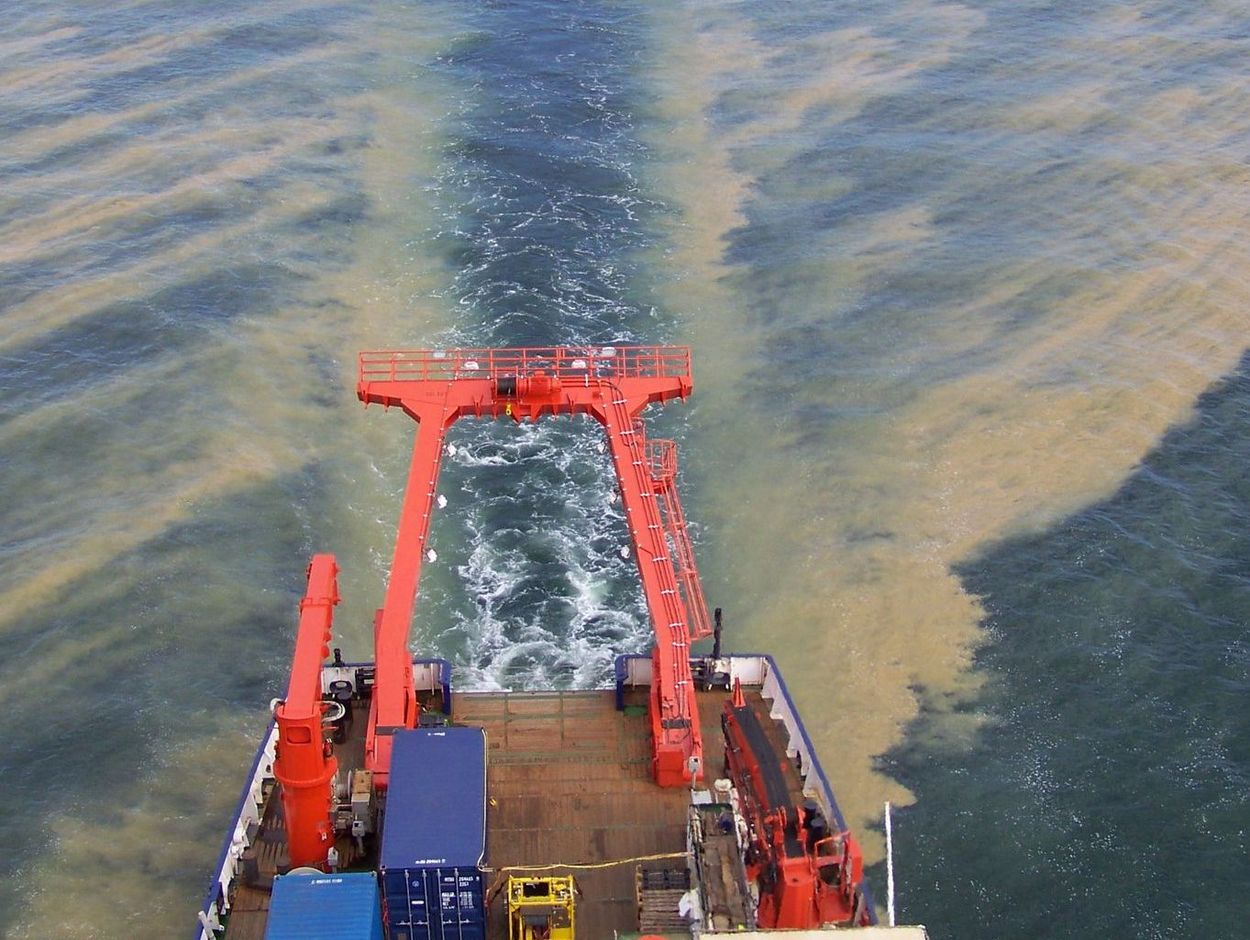Phytoplankton is the primary energy source for all marine ecosystems: These tiny plants floating in the seawater use photosynthesis to bind energy in the form of biomass, which is then passed on step by step in the marine food webs all the way to different types of fish and piscivores. How much energy reaches the different organisms depends on their position in the food web. Around 90 per cent of the energy is lost as heat from one level to the next. The more levels a food web has, the less energy reaches the organisms in the highest positions, such as predatory fish.
“The phytoplankton of the central Baltic Sea has changed considerably over the last three decades. In summer, it is increasingly dominated by mass developments of filamentous cyanobacteria. The phenomenon is known as blue-green algae blooms,” says Markus Steinkopf, marine biologist at the Leibniz Institute for Baltic Sea Research (IOW). The blue-green algae are competitively superior over other phytoplankton due to the higher water temperatures caused by climate change and the persistently high nutrient load of the Baltic Sea, Steinkopf explains. “Due to their shape and size, filamentous blue-green algae cannot be ingested by the small crustaceans of the zooplankton, which typically occupy the next position in marine food webs after the phytoplankton. Until now, the consequences for the energy supply of higher organisms were largely unknown,” says the lead author of the study on food web changes in the Baltic Sea, which has now been published in Ecology and Evolution.
Steinkopf addressed this issue by comparing the food web position of cod and flounder living in the central Baltic Sea with cod and flounder from the western Baltic Sea, where blue-green algae blooms do not occur. To identify the diet of the investigated fish populations and thus determine their food web position, he used nitrogen stable isotope analysis in amino acids. Depending on what the fish feed on, characteristic patterns of the different amino nitrogen stable isotopes can be detected in their muscle tissue and very precisely interpreted.
The research team led by the scientist from Warnemünde came to an exceptionally clear conclusion regarding cod: In the blue-green algae-rich central Baltic Sea inhabited by the eastern Baltic cod population, the food web is significantly longer than of cod in the western Baltic Sea. Steinkopf: “The food web position of the western Baltic cod is 4.1, while that of the eastern Baltic cod ranges between 4.8 and 5.2. This means an energy loss of 60 up to 99 per cent for the eastern Baltic cod compared to the western Baltic cod.” In the food web position of flounder, however, there were only slight differences between the two sea areas: 3.4 in the western vs. 3.1 in the central Baltic Sea.
“Flounder in both sea areas mainly feed on mussels, which have a phytoplankton-based foodweb, whether or not there are blue-green algae blooms. Major differences were therefore not to be expected” explains Uwe Krumme from the Thünen Institute of Baltic Sea Fisheries, co-author of the study. The Thünen Institute, which has the relevant expertise on fish stocks in the Baltic Sea, processed the fish samples for the study, among other things. “The situation is different for the two cod stocks. Western Baltic cod feed primarily on the common shore crab, a sea floor dweller. Their food web is therefore shorter than that of the eastern Baltic cod, which mainly feed on herring and sprat, which in turn live on zooplankton. However, these nutritional differences alone cannot explain the significantly higher food web position of the eastern Baltic cod,” Krumme continues.
So what causes the marked lengthening of the eastern Baltic cod food web? “In the blue-green algae areas, the zooplankton changes its diet. Instead of being vegetarian, it feeds on microbes that live on the excretions or decomposition products of the blue-green algae when the blooms die off – as shown by earlier IOW analyses. This creates a full additional level in the food web, which inevitably leads to high energy loss in the organisms of subsequent food web positions,” explains Natalie Loick-Wilde, specialist in isotope-based food web analysis and also co-author of the study. “This kind of food web lengthening in fish has been the subject of theoretical discussion for quite a while. Now we can measure it directly for the first time and clearly assign it to the blue-green algae-dominated food web,” the marine biologist says. She has established one of the few marine research labs in the world at the IOW, in which stable nitrogen and carbon isotopes can be measured in 13 different amino acids.
“The isotope-based food web analysis is a valuable tool for revealing fundamental changes in ecosystems and gaining a better understanding of interactions. The energy crisis in eastern Baltic cod shows that fishing restrictions alone are no longer sufficient for stock recovery. Instead, the food web itself must be rehabilitated. However, this can only be achieved if all possibilities available to get the eutrophication of the Baltic Sea under control are used on a transnational basis,” Markus Steinkopf sums up. The results on flounder show that not all parts of the food web are equally affected. But: “The study also suggests that food web or trophic lengthening is not only relevant in the Baltic Sea, but will develop into a global problem, as climate change promotes harmful algal blooms and many other stressors for food webs,” the marine biologist concludes.








